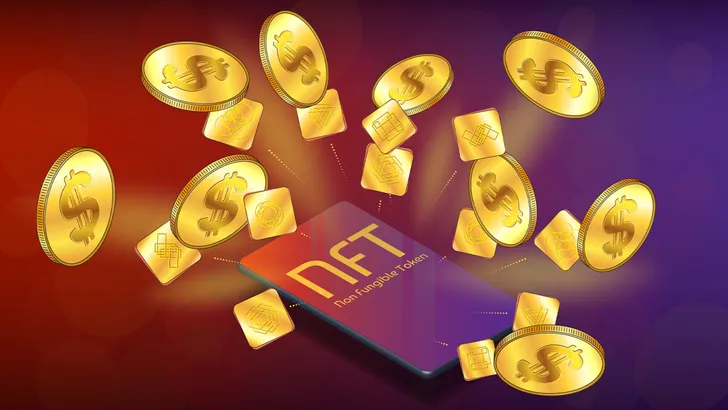Token Gating: Definition, Examples & Benefits

crypto basics
The realm of cryptocurrencies, with its coins, tokens, NFTs, and various other concepts, offers a variety of features to an entire spectrum of users. Token gating is one particularly exciting perk enabled by the power of blockchain and smart contracts.
What started as just another buzzword in the realm of digital currency quickly turned out into a viable way to distribute exclusive content and foster engagement. But what does token gating really mean, and how does it work?
Don’t be surprised if you’re puzzled by the term. Even some seasoned tech aficionados and blockchain connoisseurs haven’t fully grasped this notion, and that’s why we created this comprehensive guide on token gating and its uses. You’ll learn everything there is to know about it, along with its benefits and drawbacks. Without further ado, let’s get started!
What Is Token Gating?

Token gating refers to the process of restricting access to specific content or experiences until users can prove that they own certain tokens. You can think of the concept as a VIP list for a nightclub. Those who have the ticket or are on the list can pass the velvet rope.
One of the key strengths of token gating is its versatility. Restricted content can be anything from membership in a Discord group to a video, a teaching course, an online event, or even a real-life music concert, party, or gathering.
The versatility further extends to cryptocurrency assets that can be used as gating instruments. Anything from a specific amount of crypto coins and tokens to a particular NFT can be used in the process of token gating.
Token gating brought a massive shift to the world of decentralized finance when it was first introduced. It brings new ways for creators, entities, and communities to monetize their content and connect with their audiences on a personal level.
It represents the evolution of traditional gating and monetizing methods, such as paid subscriptions and ad revenues. While token gating isn’t perfect, it brings many advantages over the classic model.
For instance, users having a unique digital “key” in the form of a crypto asset allows them to use it like other cryptocurrencies; they can buy, sell, and trade them with others. Moreover, token gating has already found its way into mainstream audiences. There are companies that facilitate token gating without requiring users to have any knowledge of crypto.
How Does Token Gating Work?
Token gating works by leveraging blockchain technology to create secure and easily verifiable digital keys that individuals and entities can use to access exclusive content. Here are the three key components that make token gating work:
- Blockchain serves as the foundation for the entire system. Every digital token used for gating purposes exists on the blockchain. It is a transparent, immutable, and distributed ledger that keeps records of all transactions securely, making it a perfect system for managing digital keys such as coins and NFTs.
- Smart contractsgovern token gating and grant access.They are programmable and self-executing, removing the need for third-party governance. Smart contracts execute when conditions written in the code are met, which means they can effortlessly verify whether you have the necessary tokens before granting you access.
- dApps represent the interface used to facilitate token gating. You can think of dApps (decentralized applications) as Web3 versions of smartphone or computer apps. They operate with blockchain and smart contracts to help users verify the ownership of tokens and access gated content.
Here’s a quick example of how token gating works in practice:
- Imagine you ran into a video or an article that was locked with token gating.
- You’d go to the relevant dApp to try and gain access.
- The dApp would then use a smart contract to verify whether you have the necessary tokens in your wallet.
- If you have those tokens, you can get in and watch a video or read an article.
Token Gating Examples

Token gating combines digital innovation with the concept of exclusivity to create an all-around useful method for sharing content. Let’s see that in practice by inspecting some of the most popular token gating examples.
#1. Access to Exclusive Communities
Token gating is one of the best ways for creators to form deep connections with their audience. Content creators (e.g., artists, writers, musicians, and filmmakers) can leverage the power of blockchain to form a token-gated community of passionate individuals and true fans.
This extends beyond just having access to someone’s music, digital art, or other media of entertainment. It’s about building a close-knit group of followers while fostering feelings of belonging and engagement.
A commonly used method for token gating is to create exclusive communities through Discord. Discord servers can be set up to be completely private or offer private channels within public servers. While Discord is popular for crypto-focused groups and projects, it can be used by anyone who wants to add a level of exclusivity to their work.
#2. Augmented Reality and Digital Art
The digital nature of token gating makes it perfect for metaverse environments. Platforms like Decentraland and The Sandbox have already implemented the concept. Only holders of specific tokens and NFTs are granted access to certain areas in the metaverse.
Another example of this is NFT token gating. It starts with a digital artist releasing their artwork as NFTs. Individuals who buy those NFTs don’t just own the artwork—they can also gain access to exclusive augmented reality experiences, virtual tours, digital galleries, and much more.
#3. Real-Life Events, Product Drops, and Offers
The flexibility of blockchain and cryptocurrencies made this concept usable in the physical world, meaning token gating has real-life applications. For instance, a sneaker brand can use blockchain to create limited edition sneakers that only the holders of particular tokens or NFTs will be able to buy.
The way this process works is with holders using a dedicated dApp to verify they own the token before being able to purchase physical goods. But real-life token-gating applications extend beyond that. Huge mainstream companies like Ticketmaster have already incorporated crypto-based token gating into their platforms.
That means even everyday users can take part in blockchain-backed events with no prior knowledge about crypto. On the other hand, there’s no lack of NFT events for true enthusiasts, such as the Bored Ape Yacht Club or Cool Cats gatherings.
Benefits of Token Gating
The benefits of token gating go far beyond mere content control, so let’s explore some of the key ones.
#1. Creates Exclusivity
Token gating is one of the best tools to create exclusivity. In a digital world that’s all about sharing and unlimited content distribution, it can be challenging to create rarity. That doesn’t just increase the perceived value of gated content; it also elevates the way it’s experienced by those who can access it.
With token gating, creators and issuers can ensure their work is only delivered to a select group of individuals. That approach can help establish a feeling of scarcity and prestige among holders while simultaneously increasing demand for both the tokens and the gated content.
#2. Rewards Holders
Contrary to its name, the main purpose of token gating isn't to act as a barrier but as a rewarding system. Content creators can use this instrument to offer dedicated followers special perks and bonuses as a token of gratitude for their support.
That way, they are simultaneously rewarding people and fostering a stronger bond with their audience while receiving compensation for their work.
#3. Adds Monetization Opportunities
Token gating creates monetization opportunities that go beyond traditional ways of earning revenue. It can help include audiences that don’t have access to traditional financial instruments but can participate using cryptocurrencies. On top of that, it allows creators to diversify their income and earn both fiat and crypto.
Why Do NFT Projects Use Token Gating?
One of the main reasons why NFT projects use token gating is to enhance their value. The main point of NFTs (non-fungible tokens) is that they are unique, which is only a part of the appeal. Their true worth comes from granting their holders certain benefits.
We’ve already seen how some NFT projects grant holders access to VIP places and events within the metaverse. These events range from art galleries to music concerts. On the other hand, there are clothing brands that utilize NFTs and token gating to add exclusivity to their drops, further elevating perceived value and the appeal of their apparel.
All of that helps NFT projects (and, to an extent, the whole crypto space) better integrate into the real world. Blockchain-backed token gating ensures content remains secure while facilitating easy authorization and fostering community building that expands beyond just crypto enthusiasts.
Token Gating Process
There are several different ways to approach the token-gating of content. The best method depends on the issuer’s needs and circumstances.
From a purely functional standpoint, the best way to token-gate something is to create a completely custom system. However, this is also the most complex and generally the most expensive way to go about it.
It requires skilled blockchain developers who are adept at both programming languages and cryptocurrency methods. The upside is that the end result will be perfectly tailored to the needs of the issuers, with all the features they need.
A less flexible but more streamlined solution is to use premade bot services, such as Collab.Land, for instance, which offers bots that can be integrated using Discord or Telegram. The biggest advantage of this method is its ease of use. Another big perk is versatility, as issuers can use both NFTs and 20+ regular tokens with support for more than 40 crypto wallets.
Finally, there are third-party platforms dedicated to token gating. Tokenproof is the perfect example of a service designed to facilitate a connection between brands and users. It brings the utility and power of Web3 to individuals in a simplified manner. Plus, Tokenproof allows people to keep their tokens in a cold wallet and only use QR codes, further enhancing security.
Finally, let’s not forget Ticketmaster, which allows various artists and organizers to use token gating to reach mainstream audiences with no prior knowledge or experience in crypto.
Risks of Token Gating
At last, token gating is not a perfect system, and there are still risks associated with using it. Here are some of the most notable downsides and potential pitfalls to be aware of before opting for token gating:
- Event attendance concerns. Hosting events to which only token holders have access increases the risk of low attendance. This problem is further amplified by the fact that cryptocurrency isn’t yet as mainstream as regular gating models (such as concert tickets or premium subscriptions), which results in a smaller audience from the get-go.
- Smart contract vulnerabilities. While smart contracts represent one of the best ways to enforce terms and ensure agreements without involving third-party governance, they aren’t without flaws. Poorly written and improperly vetted code is prone to hacks and exploits. That can result in loss of tokens and event failure.
- Potential scams. The way dApps and smart contracts function to verify whether users have necessary tokens is through gasless transactions (also known as meta transactions). While they incur no cost to the user, hackers can exploit them to gain sensitive information about the holder or even steal their funds.
Key Takeaways
As we can see, the novel concept of token gating is much more than just another subscription model. Its implementation and real-world application have proven it to be a viable method of creating exclusivity, fostering engagement, and providing additional monetization options.
Looking forward, we might see more mainstream services implementing token gating APIs and integrating blockchain features into traditional businesses. That way, a simple gating tool and rewarding incentive may end up playing a crucial role in shaping the digital landscape of tomorrow!